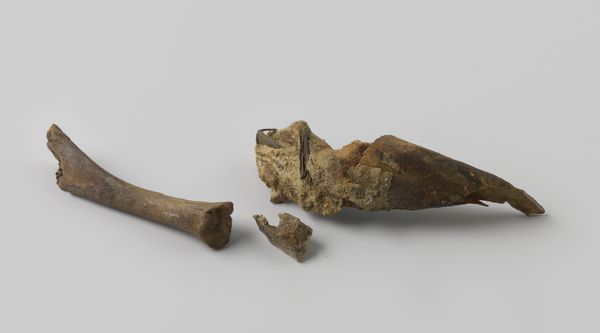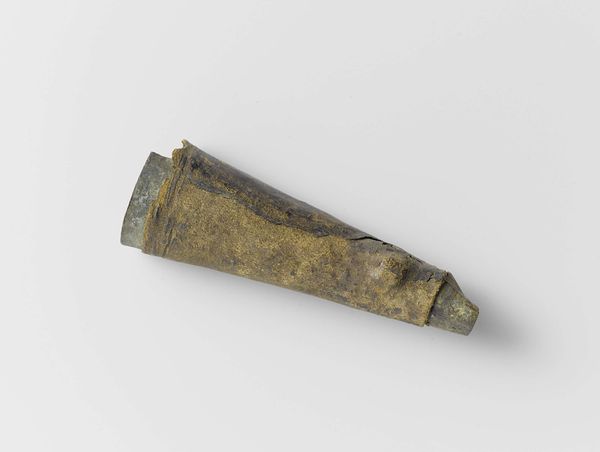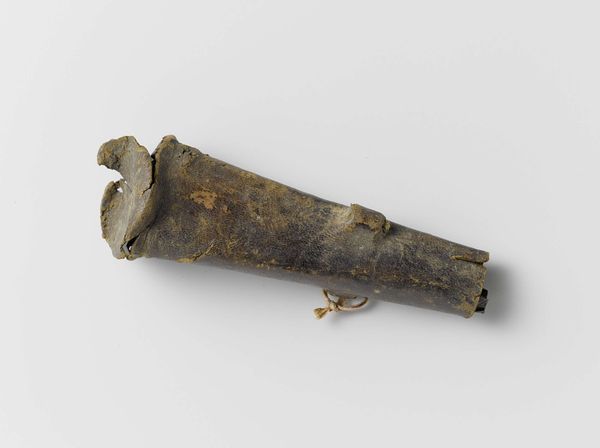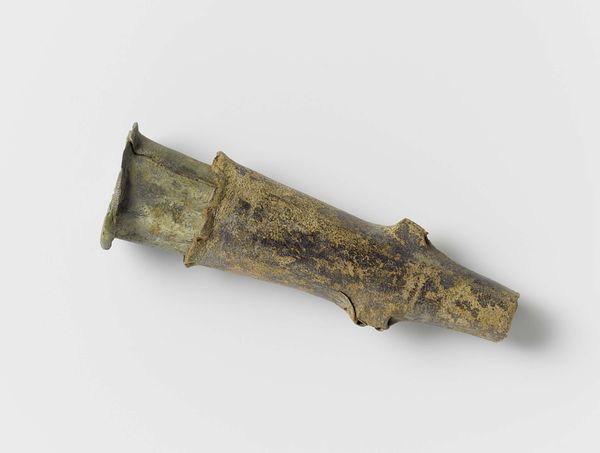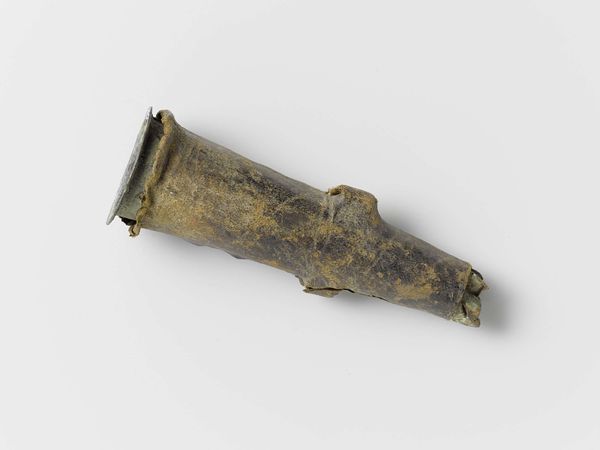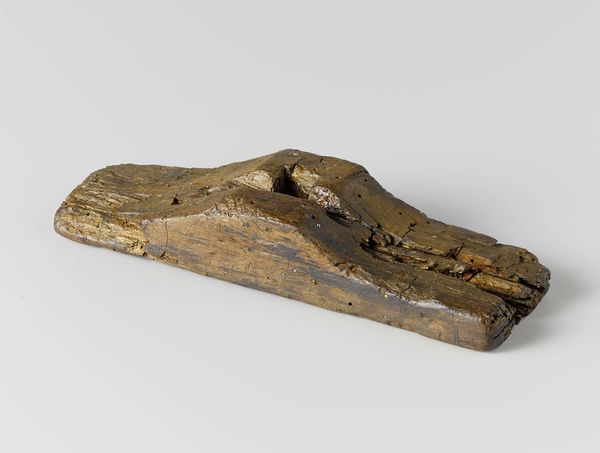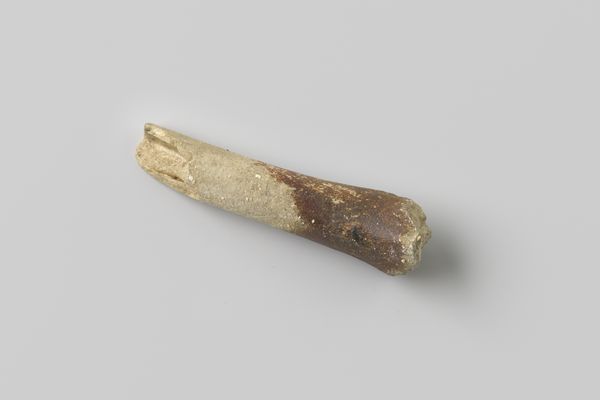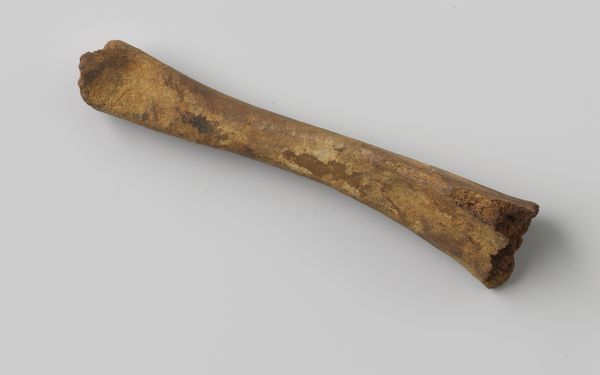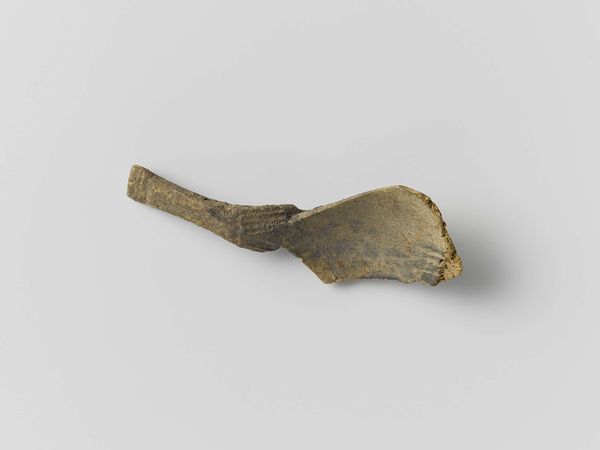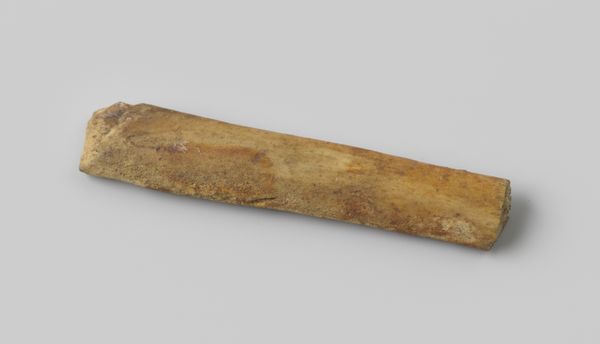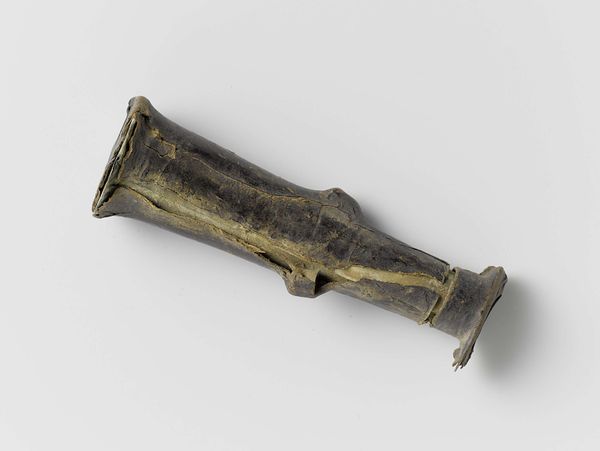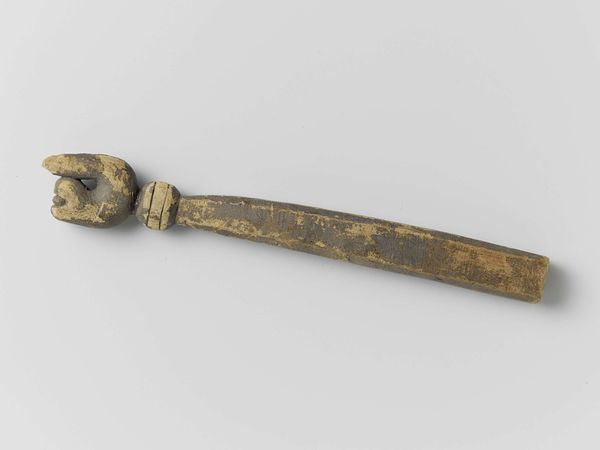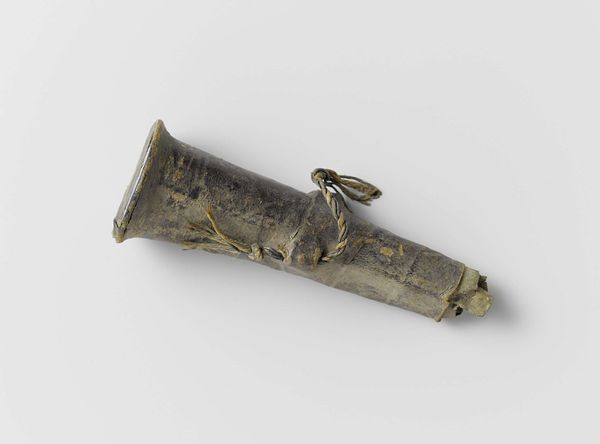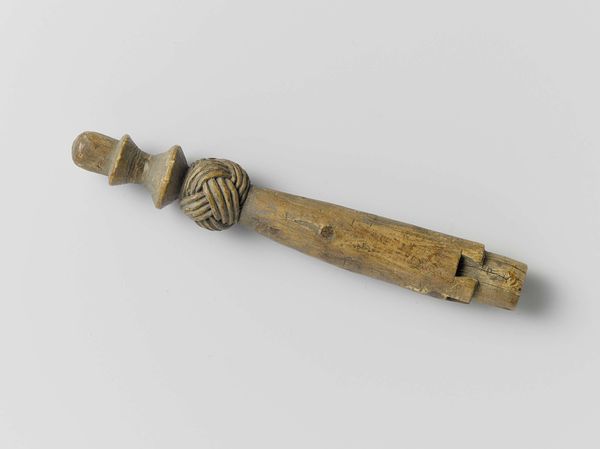
Fragment onderkaak met tanden van schaap of geit uit het wrak van de Oost-Indiëvaarder Hollandia before 1748
0:00
0:00
found-object, sculpture
#
organic
#
baroque
#
dutch-golden-age
#
found-object
#
sculpture
Dimensions: length 9.4 cm, width 3.8 cm, depth 1.2 cm
Copyright: Rijks Museum: Open Domain
Editor: This is a fragment of a mandible with teeth, dating from before 1748, identified as being from a sheep or goat, salvaged from the wreckage of the Dutch East India ship, the Hollandia. The decaying organic material has a sombre, evocative feeling… What’s your read on this evocative object? Curator: The iconography here is particularly potent. Consider how teeth, bones, and fragments often function as ‘memento mori’ – reminders of mortality. This fragment isn't just bone; it is a symbol freighted with meanings about trade, loss, and survival. Editor: Trade and survival, why is that? Curator: Well, the Hollandia was a Dutch East Indiaman, a vessel dedicated to commerce and resource extraction, with all the human cost attached. The animal this bone belonged to would likely have been onboard to feed the crew during that journey. The wrecking implies loss; then consider its subsequent discovery and preservation. The symbol speaks to what survives the wreck. It carries the continuity of history within its very material. Editor: So, the bone is less about the animal and more about… what it represents? The broader themes around its existence? Curator: Precisely! Its incompleteness amplifies the sense of passing time and change, forcing us to fill in the blanks, project our understanding onto the artifact. It represents survival but also the process of reconstruction that always defines understanding history. Editor: I never thought of a bone having such a multi-layered story embedded inside! Thank you for clarifying the narrative. Curator: Indeed. Artifacts often carry many tales silently beneath the surface; sometimes, we just need to know how to look, and to listen.
Comments
No comments
Be the first to comment and join the conversation on the ultimate creative platform.
